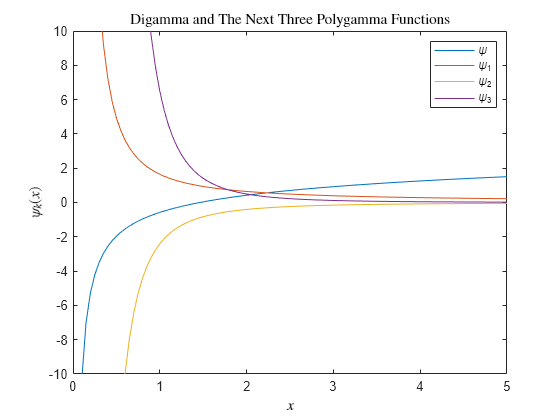psi
digamma 和 polygamma 函数
说明
Y = psi(X)X 的每个元素计算 digamma 函数,各元素必须为非负实数。
Y = psi(k,X)X 的 polygamma 函数,计算的值是在 X 处的 digamma 函数的 k 阶导数。因此,psi(0,X) 是 digamma 函数,psi(1,X) 是 trigamma 函数,psi(2,X) 是 tetragamma 函数,以此类推。
示例
输入参数
详细信息
参考
[1] Abramowitz, M. and I. A. Stegun, Handbook of Mathematical Functions, Dover Publications, 1965, Sections 6.3 and 6.4.
扩展功能
版本历史记录
在 R2006a 之前推出
